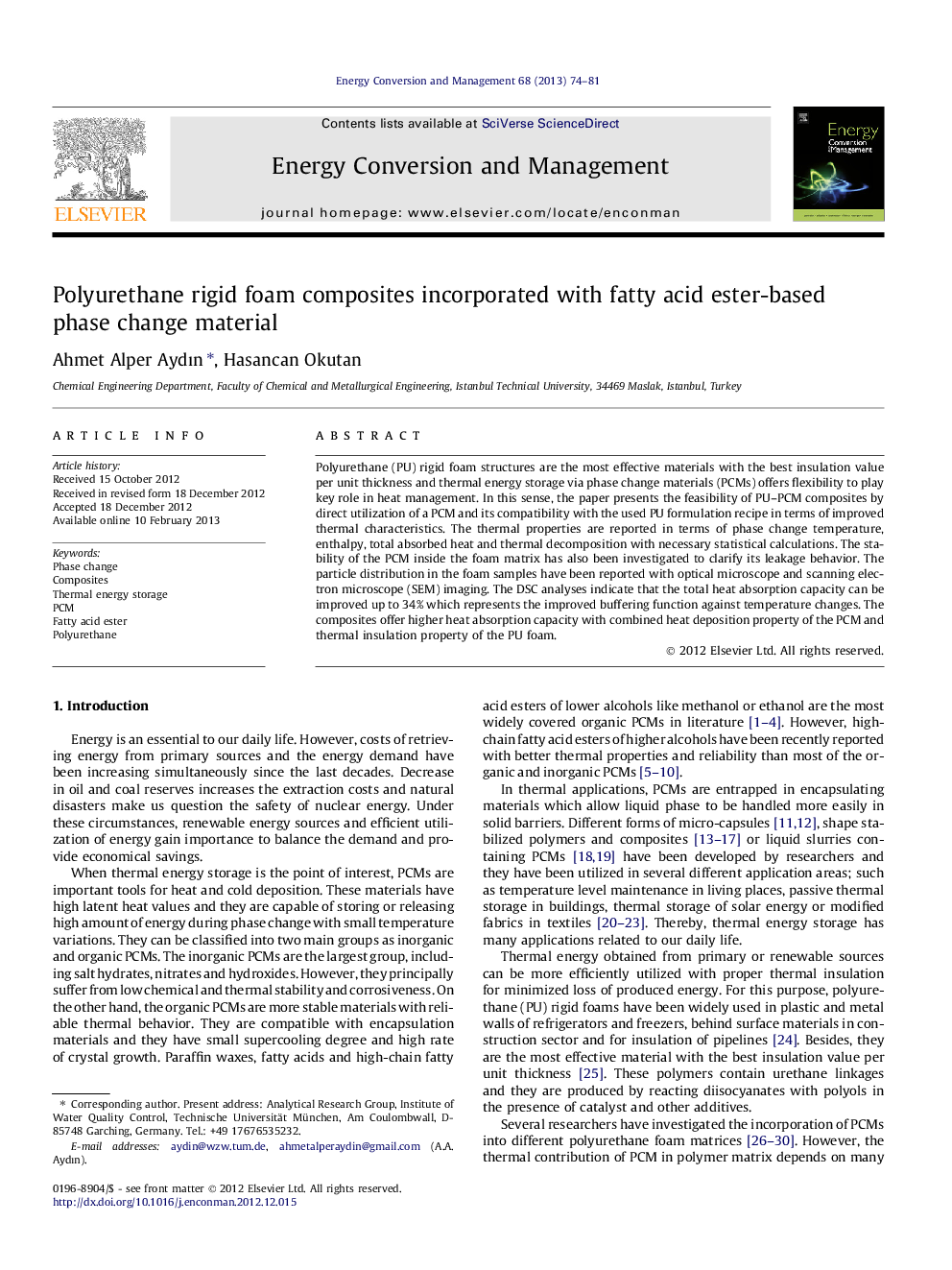| Article ID | Journal | Published Year | Pages | File Type |
|---|---|---|---|---|
| 764178 | Energy Conversion and Management | 2013 | 8 Pages |
Polyurethane (PU) rigid foam structures are the most effective materials with the best insulation value per unit thickness and thermal energy storage via phase change materials (PCMs) offers flexibility to play key role in heat management. In this sense, the paper presents the feasibility of PU–PCM composites by direct utilization of a PCM and its compatibility with the used PU formulation recipe in terms of improved thermal characteristics. The thermal properties are reported in terms of phase change temperature, enthalpy, total absorbed heat and thermal decomposition with necessary statistical calculations. The stability of the PCM inside the foam matrix has also been investigated to clarify its leakage behavior. The particle distribution in the foam samples have been reported with optical microscope and scanning electron microscope (SEM) imaging. The DSC analyses indicate that the total heat absorption capacity can be improved up to 34% which represents the improved buffering function against temperature changes. The composites offer higher heat absorption capacity with combined heat deposition property of the PCM and thermal insulation property of the PU foam.
Graphical abstractFigure optionsDownload full-size imageDownload as PowerPoint slideHighlights► Improvement of polyurethane (PU) rigid foams with phase change materials (PCMs). ► Feasibility of using non-encapsulated PCMs in PU rigid foam formulations presented. ► Total heat absorption capacity enhancement by 34% achieved. ► PU–PCM composites offer additional specific and latent heat absorption capacity. ► Improved heat sinks of the composites provide enhanced thermal buffering.
